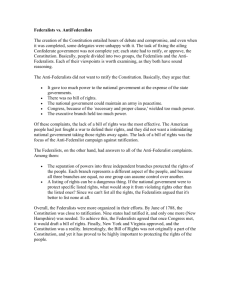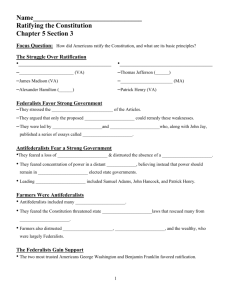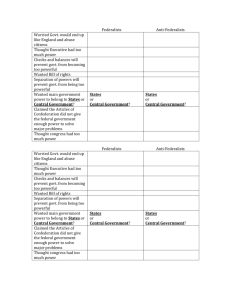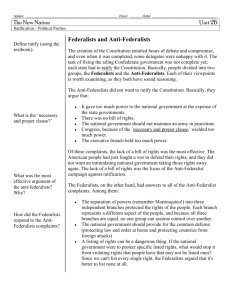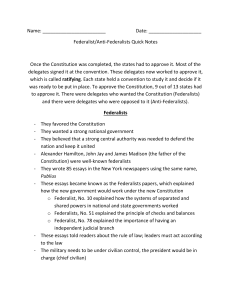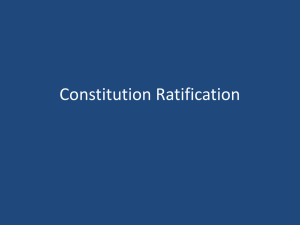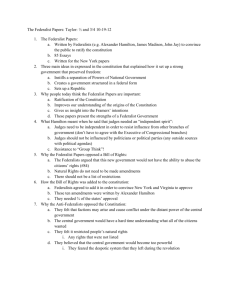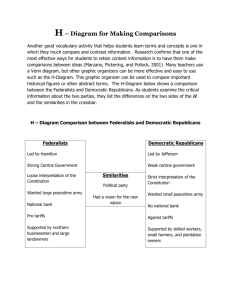ap enduring understanding: development of political parties in the
advertisement
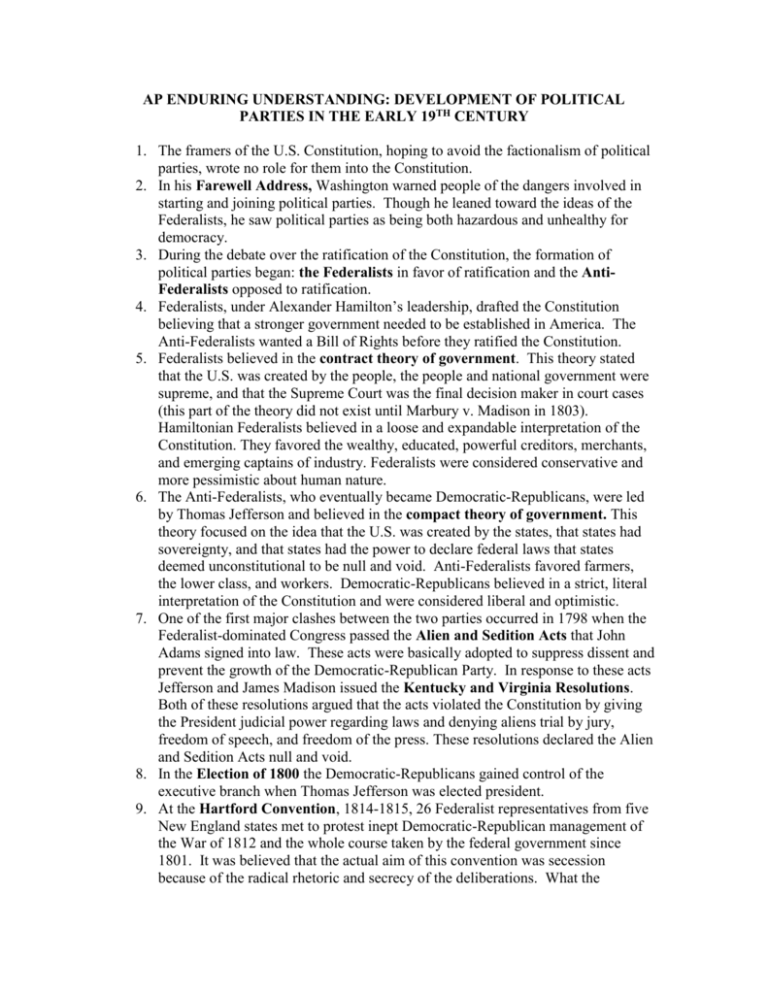
AP ENDURING UNDERSTANDING: DEVELOPMENT OF POLITICAL PARTIES IN THE EARLY 19TH CENTURY 1. The framers of the U.S. Constitution, hoping to avoid the factionalism of political parties, wrote no role for them into the Constitution. 2. In his Farewell Address, Washington warned people of the dangers involved in starting and joining political parties. Though he leaned toward the ideas of the Federalists, he saw political parties as being both hazardous and unhealthy for democracy. 3. During the debate over the ratification of the Constitution, the formation of political parties began: the Federalists in favor of ratification and the AntiFederalists opposed to ratification. 4. Federalists, under Alexander Hamilton’s leadership, drafted the Constitution believing that a stronger government needed to be established in America. The Anti-Federalists wanted a Bill of Rights before they ratified the Constitution. 5. Federalists believed in the contract theory of government. This theory stated that the U.S. was created by the people, the people and national government were supreme, and that the Supreme Court was the final decision maker in court cases (this part of the theory did not exist until Marbury v. Madison in 1803). Hamiltonian Federalists believed in a loose and expandable interpretation of the Constitution. They favored the wealthy, educated, powerful creditors, merchants, and emerging captains of industry. Federalists were considered conservative and more pessimistic about human nature. 6. The Anti-Federalists, who eventually became Democratic-Republicans, were led by Thomas Jefferson and believed in the compact theory of government. This theory focused on the idea that the U.S. was created by the states, that states had sovereignty, and that states had the power to declare federal laws that states deemed unconstitutional to be null and void. Anti-Federalists favored farmers, the lower class, and workers. Democratic-Republicans believed in a strict, literal interpretation of the Constitution and were considered liberal and optimistic. 7. One of the first major clashes between the two parties occurred in 1798 when the Federalist-dominated Congress passed the Alien and Sedition Acts that John Adams signed into law. These acts were basically adopted to suppress dissent and prevent the growth of the Democratic-Republican Party. In response to these acts Jefferson and James Madison issued the Kentucky and Virginia Resolutions. Both of these resolutions argued that the acts violated the Constitution by giving the President judicial power regarding laws and denying aliens trial by jury, freedom of speech, and freedom of the press. These resolutions declared the Alien and Sedition Acts null and void. 8. In the Election of 1800 the Democratic-Republicans gained control of the executive branch when Thomas Jefferson was elected president. 9. At the Hartford Convention, 1814-1815, 26 Federalist representatives from five New England states met to protest inept Democratic-Republican management of the War of 1812 and the whole course taken by the federal government since 1801. It was believed that the actual aim of this convention was secession because of the radical rhetoric and secrecy of the deliberations. What the Federalists were doing was calling for amending the Constitution in order to weaken the influence of the South and West on the federal government. However, the actual outcome of this convention was the destruction of the Federalist Party because when the war ended favorably, the Federalists were seen as traitorous. 10. From 1817 to 1825, the “Era of Good Feelings,” the Democratic-Republican Party led by James Monroe, ran the country almost unopposed. Following the Favorite Son Election of 1824 in which candidates who ran represented regions, not political parties, the Democratic-Republicans split into the National Republicans (Federalists) and Jacksonian Democrats (DemocraticRepublicans). 11. In 1828, in response to the Tariff of Abominations, vice president John C. Calhoun wrote, but did not sign, the South Carolina Exposition and Protest. In it he argued that in any disagreement between a state and the national government a special state convention should be called to decide the conflict by either affirming or nullifying the federal law. In 1832 the South Carolina legislature nullified the new Tariff of 1832 which reduced some duties but retained high taxes on imported iron, cottons, and woolen goods.

